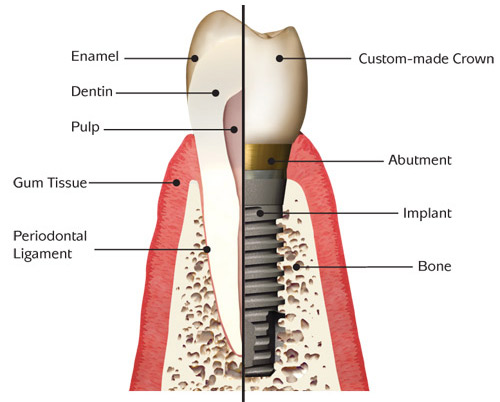It is one of the most advanced procedures that are done in order to replace missing teeth. Dental Implants come in various sizes and spaces. The main function of implants is to act as a support for the crown. They are placed in bone and it is one of the most modern methods to replace missing teeth. They basically act as a substitute for root portion of tooth. They are cylindrical in shape and are made of material namely titanium.
Implant Procedure
Implants procedure is done in various stages. Firstly an implant is placed of specific shape and size according to the patients need. The best way to place implants is immediately after the extraction. Then the patient is asked to wait for few months till the implant fuses with the bone. This procedure is more commonly known as osseo-integration. Second stage involves attachment of abutment. Final step involves placement of crown.
Advantages:
- Lifetime replacement
- Improved eating habits so better nutrition
- Improved speech, appearance and comfort
- Act as a natural tooth
- Better self esteem and convenient
- Keeps bone healthy
- Maintains proper smile
Indications of Implants Procedure
Any edentulous areas are considered to be an indication for implants. An adequate thorough examination both clinically and radio- graphically should be done before performing any implant procedure.

Implant Procedure
It’s not necessary that if a patient has adequate space, implant procedure can be performed. There are various factors that are considered before performing implant procedures on patients. Patients with underline diseases where implant procedures can’t be performed are as follows:
- Endocrine disorders such as Diabetes Mellitus
- Uncontrolled granulomatous diseases, such as Tuberculosis and Sarcoidosis
- Special care for patients with cardiovascular diseases, such as Arteriosclerosis with angina.
- Bone diseases
- Uncontrolled hematologic disorders such as Generalized Anemias, Hemophilia
- Smoking patients
- Elderly patients with bone loss















